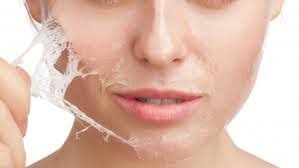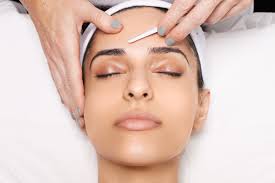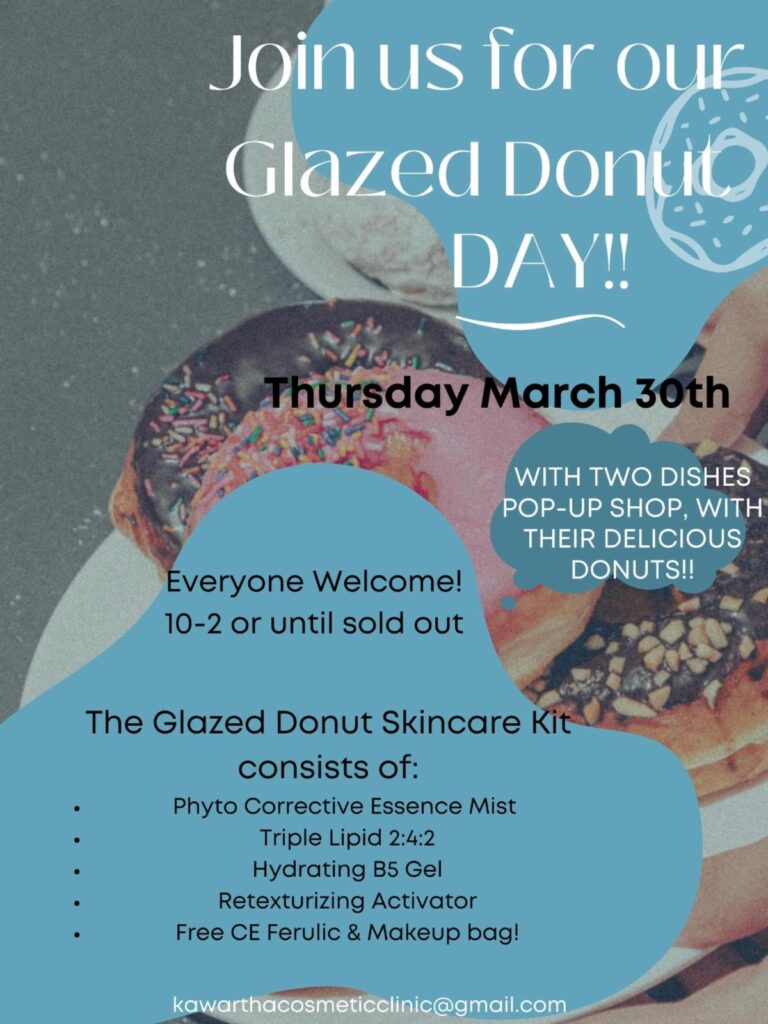Peels &
Facials

Chemical peels have been gaining popularity in recent years as skin resurfacing treatments, but they’ve been used as beauty treatments since the time of ancient Egypt.

Beverly HIlls stimulator peel
Beverly Hills Stimulator Peel: A revolutionary beta/alpha acid spa peel stimulates cellular turnover, reduces fine lines and wrinkles improving overall skin tone, texture and clarity without downtime.
Ossential Acne and Oil Control Treatment: A combination of AHA’s and salicylic acid are used to minimize excess oil production and tighten pores. Calm, clear and healthier oil-free skin is revealed, minimizing acne scarring.

SKIN TX JESSNER PEEL

Like all other chemical peels, the Jessner peel is done by brushing an acidic liquid onto the skin to remove the top layers and encourage new, younger looking skin to grow.
The Jessner peel was first formulated over a hundred years ago, and it’s still in use today thanks to its ability to:
- reduce dark patches and age spots
- even out skin tone
- reduce the appearance of scars
- smooth fine lines and wrinkles
- treat melasma (skin discoloration), hyperpigmentation, and acne scars
While many chemical peels can cause lasting discoloration on darker skin, a recent small study found that a modified Jessner’s solution safely and effectively reduces melasma and pigment imperfections in darker skin. It has also been shown to be an effective treatment of acne
The Jessner peel works by removing the top layers of skin to reveal smoother, more even-toned skin beneath. How deep the peel penetrates depends on what kind of chemical peel you get — superficial, medium, or deep.
The Jessner peel is typically a medium peel, which means it removes skin cells from the top layer of your skin, the epidermis, and the upper portion of the middle layer, the dermis. However, it can also be used as a superficial peel, which has a faster healing time but needs to be performed more often to get the results of a deeper peel.
Regardless of the depth, the peel is made up of a mix of lactic acid, salicylic acid, and resorcinol in a 95 percent ethanol solution. Due to some concerns around the safety of resorcinol, there are also Jessner peel solutions made without it.
The Jessner solution is also frequently added to other peel solutions to increase their effectiveness on scars and pigmentation.
What to expect during the procedure?
Chemical peels are typically done in your cosmetic clinic. Your medical Estheticican will begin by cleaning your skin thoroughly to remove any oil or products.
They may also cover your eyes with tape, goggles, gauze, or ointment and cover up your hair if you’re treating your face. With a medium peel you may have the option of taking a sedative or painkiller to make the procedure more comfortable.
The peel is applied with gauze, a brush, or a cotton-tipped applicator. The treated skin will begin to look frosted and whiten. You may feel burning or stinging.
After three to five minutes, your medical esthetician will remove the peel and apply a cool compress and lotion to soothe your skin.
Chemical peel side effects
While everyone will experience some side effects from the peel, complications are more common among people with darker skin tones.
These include:
- redness and swelling
- peeling
- stinging or burning
Rare complications include:
- permanent darkening or lightening of the skin
- scarring or infection
What to expect after a peel?
After the peel, your skin may continue to burn or sting for 20 minutes or more. Your skin will be red, swollen, and tight for the first 24 hours or so. After that, the swelling will go down and your skin will begin peeling.
Your skin may darken or even develop brown patches during this time, but the spots rarely stay after the skin has healed. Once the skin begins peeling off, new smooth skin will be revealed.
It can take five to seven days after a medium peel to develop new skin, and the redness can last for months in some cases. Generally, it will take 7–14 days to heal completely and see the full results of the peel.
However, the results aren’t permanent. Your skin will continue to age with time and sun exposure; acne can create new scars; and you may develop new spots of hyperpigmentation.
Taking care of your skin after a peel
A medical facial is generally performed in a Medical Cosmetic Clinic. During the treatment, your skin care professional will cleanse, steam, exfoliate, and replenish your skin using a combination of modalities such as chemical peels, microdermabrasion, and dermaplaning. Additional treatments including intense pulsed light (IPL), radiofrequency, or microneedling may also be incorporated.
Depending on the treatments performed, the facial may last 30 minutes to 1.5 hours. You may also experience some mild discomfort and downtime. This is contingent upon the concentration of ingredients used and what procedures were performed. After the procedure is completed, it is important that you follow the post-procedure protocol outlined by your skincare professional. This is especially important if your medical facial incorporates treatments that increase your skin’s sensitivity to UV light.
When is the best time to get a medical facial?
When and how often to get a medical facial depends on a variety of factors including skin concerns, desired outcome, and the type of treatment performed. If you are looking to improve chronic acne, you may benefit from a series of medical facials spaced 4-6 weeks apart. If you are seeking quick skin rejuvenation to improve radiance prior to a big event, you may benefit from a single medical facial. However, the results are generally more pronounced after a series of treatments.
Since these facial treatments leverage medical-grade products and tools, it is recommended that they are performed during periods when sun exposure will be limited. This does not necessarily eliminate the summer months, but it is important to be very diligent about sun protection.
Where should I get a medical facial?
To stay comfortable after a peel and improve healing, you should:
- Apply ice packs or use a fan to relieve the burning. Just be careful to not let the skin dry out in front of the fan.
- Moisturize frequently. Apply moisturizer any time your skin feels tight, dry, or itchy. You may need to apply moisturizer 10–20 times a day in the days following a peel.
- Follow all aftercare instructions your medical Esthetician gives you. Your medical Esthetician will ask you to follow a skin care regimen including gentle cleansing and antibiotic ointment if necessary.
- Do not pick, peel, or rub your skin. The peeling outer layer acts like a bandage and protects the new skin underneath. Removing this layer too soon can lead to burning, pain, and potential scarring. Hot water in the shower and sweating can also cause your skin to come off too soon.
- You may be instructed to take over-the-counter pain-relievers and/or antibiotics.
- Prevent sun exposure. The skin is especially sensitive to the sun after a peel. Completely avoid the sun until your skin is fully healed and be careful to use proper sun-protective clothing and sunscreen in the months following to prevent dark spots from developing and protect against damaging sun burns.
If you are bothered by the redness and peeling of your skin, you can wear makeup to cover it once your skin is no longer irritated.
Facials to Bring Out the Glow in your Skin

Kawartha Cosmetic Clinic Medical Facial
Why choose a medical-grade facial?
Performed in a Medical Cosmetic Clinic, medical facials cleanse, exfoliate, extract, and hydrate skin using a combination of medical-grade products and tools. Suitable for a variety of skin types, these highly-customizable treatments improve the appearance of several skin concerns including fine lines and wrinkles, skin firmness, skin texture, pore congestion, and acne.
What are medical facials?
A medical facial follows the same general steps as a classic spa facial, including cleansing, exfoliation, extraction, and hydration. The primary difference between these two treatments is that medical facials are performed in a physician’s office using medical-grade products and tools. The overall results therefore appear more effective.
Since medical facials are performed within a Medical Cosmetic Clinic, and the skincare professional administering the treatment is able to affect the skin at a deeper level. For example, a low concentration chemical peel may be used during a classic spa facial, whereas high-concentration, unbuffered acids can be used during a medical facial.
Medical facials are highly customizable and can be tailored to your specific skin needs and concerns. Additional treatment add-ons such a dermaplaning and or Microdermabrasion may be incorporated to physically exfoliate the top layer of the skin and enhance the absorption of the chemical peel solution. Medical facials are also an effective complement to in-office treatments such as dermal fillers and laser skin resurfacing.
Who is a good candidate for a medical facial?
Since medical facials are highly customizable, they can effectively address a wide spectrum of skin concerns, making them appropriate for nearly everyone. Your skin care professional will work with you to understand your specific skin needs and will recommend a customized medical facial treatment plan.
Although medical facials can easily be customized using a variety of tools and products, there are some conditions that may preclude treatment including the use of medications that render skin very sensitive. As with any form of facial treatment, certain active ingredients and modalities such as laser resurfacing should be avoided if you are pregnant or have a heart condition. It is important that you discuss with your skincare professional any allergies, skin sensitivity, underlying conditions, or medications being taken prior to receiving a medical facial.
What will I experience during a medical facial?
A medical facial is generally performed in a Medical Cosmetic Clinic. During the treatment, your skin care professional will cleanse, steam, exfoliate, and replenish your skin using a combination of modalities such as chemical peels, microdermabrasion, and dermaplaning. Additional treatments including intense pulsed light (IPL), radiofrequency, or microneedling may also be incorporated.
Depending on the treatments performed, the facial may last 30 minutes to 1.5 hours. You may also experience some mild discomfort and downtime. This is contingent upon the concentration of ingredients used and what procedures were performed. After the procedure is completed, it is important that you follow the post-procedure protocol outlined by your skincare professional. This is especially important if your medical facial incorporates treatments that increase your skin’s sensitivity to UV light.
When is the best time to get a medical facial?
When and how often to get a medical facial depends on a variety of factors including skin concerns, desired outcome, and the type of treatment performed. If you are looking to improve chronic acne, you may benefit from a series of medical facials spaced 4-6 weeks apart. If you are seeking quick skin rejuvenation to improve radiance prior to a big event, you may benefit from a single medical facial. However, the results are generally more pronounced after a series of treatments.
Since these facial treatments leverage medical-grade products and tools, it is recommended that they are performed during periods when sun exposure will be limited. This does not necessarily eliminate the summer months, but it is important to be very diligent about sun protection.
Where should I get a medical facial?
Medical facials should be performed by a physician or a licensed aesthetician. As these treatments employ medical-grade tools, they are not entirely risk-free. To avoid any unnecessary side effects, look for a licensed skin care professional with extensive knowledge and a proven track record in delivering safe, effective results.
What should I do after a medical facial?
It is recommended to incorporate an at-home skincare regimen after a medical facial; always consult with your aesthetician for individual at-home advice.


